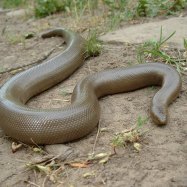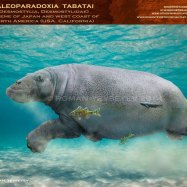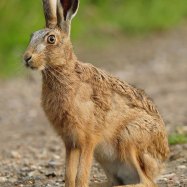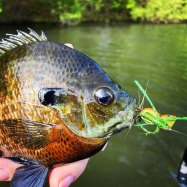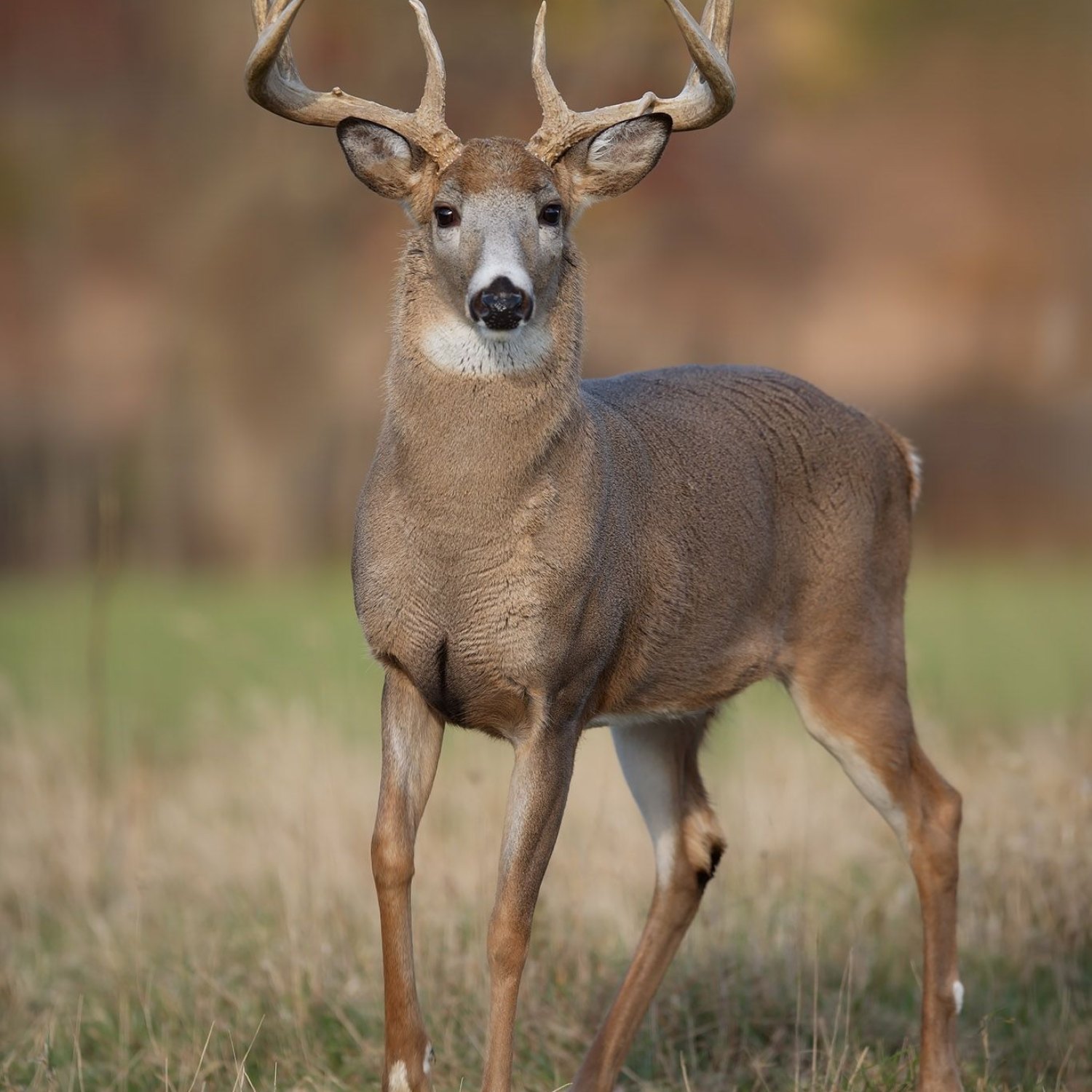
White Tail Deer
4.5 to 7.3 feet
The White Tail Deer, found in North America, belongs to the family Cervidae. With a medium-sized and slender body, it can reach lengths of 4.5 to 7.3 feet. These graceful animals get their name from the distinctive white underside of their tail. Keep an eye out for these beautiful creatures in their natural habitat! #WhiteTailDeer #NorthAmerica #Cervidae #NatureWatching.
Animal Details Summary:
Common Name: White-tailed Deer
Kingdom: Animalia
Habitat: Forests, woodlands, grasslands
The Majestic and Adaptable White-Tailed Deer: A Fascinating Creature of North America
The sight of a white-tailed deer gracefully bounding through a forest or a grassland is a symbol of beauty and nature's tranquility. Its scientific name, Odocoileus virginianus, might be a mouthful, but there's no doubting the captivating nature of this animal also known as the white-tailed deer.Found in forests, woodlands, and grasslands across North and South America, this mammal has firmly cemented its place in the animal kingdom as a truly remarkable species. From its distinctive coloring to its feeding habits and geographical distribution, the white-tailed deer is a creature that continues to fascinate biologists and nature enthusiasts alike White Tail Deer. So, let's delve into the world of this magnificent animal and uncover its remarkable features.
The Classification of the White-Tailed Deer
The white-tailed deer belongs to the animal kingdom, scientifically known as Animalia. It falls under the phylum Chordata, which includes animals with spinal cords. Within this phylum, the white-tailed deer is classified as a mammal, as it is warm-blooded, gives birth to live young, and feeds its offspring with milk. Within the mammalian class, it is further categorized into the order Artiodactyla, which includes even-toed ungulates, such as deer, goats, and cattle.One of the unique features of the white-tailed deer is its family, Cervidae, which consists of deer, moose, and elk. This family consists of herbivorous mammals, meaning they feed solely on plants. While the white-tailed deer is mainly found in North America, its close cousin, the black-tailed deer, can be found roaming in parts of South America.
The Habitat of the White-Tailed Deer
The white-tailed deer is an incredibly adaptable and resourceful animal, making it one of the most widespread mammal species in the Americas Western Rattlesnake. It can be found in various habitats, including forests, woodlands, and grasslands. This remarkable adaptation has enabled them to thrive in various environments.In the summer, they can be found in areas with dense vegetation, such as forests and woodlands, where they can find an abundance of food and shelter. During the winter, when the vegetation is scarce, they migrate to more open areas, such as grasslands, to forage for food.
The Feeding Habits of the White-Tailed Deer
As mentioned before, the white-tailed deer is a herbivorous animal, meaning it feeds primarily on plants. This versatile species can adapt its diet according to its habitat and the availability of food. In the summer, it feeds on a wide range of plants, including grasses, shrubs, and fruits. During the winter, when the vegetation is scarce, it mainly relies on woody plants such as bark, twigs, and leaves.Apart from nourishment, plants also provide the deer with important minerals and vitamins, crucial for their overall health and well-being. These include calcium for strong bones, phosphorus for energy, and potassium to maintain fluid balance in their bodies.
The Geographical Distribution and Country of Origin of the White-Tailed Deer
The white-tailed deer is an iconic species in the United States, where it is believed to have originated. However, it can be found across North and South America, from Canada to Peru. This wide geographical distribution makes it one of the most common game animals in the region, with hunting being a popular recreational activity for many.Despite this widespread distribution, the white-tailed deer has a fragmented population, with different subspecies adapted to specific regions. These subspecies have distinct characteristics, such as body size and antler shape, depending on their habitat. This adaptability is one of the reasons for the success and resilience of this remarkable species.
The Distinctive Features of the White-Tailed Deer
One of the most striking features of the white-tailed deer is its coloring, which varies depending on the season. In summer, their coat is reddish-brown, while in winter, it changes to grayish-brown or ochre, allowing them to blend into their environment and avoid predators. This ability to change their coloring is called molting, and it helps them survive harsh weather conditions.In addition to their coloring, the white-tailed deer has a medium-sized, slender body, with a short tail that is white on the underside, giving them their name. They also have distinctive antlers that are shed and regrown every year. These antlers, found only on males, are used to defend their territory and impress females during mating season.
The Physical Characteristics and Size of the White-Tailed Deer
The white-tailed deer has a sturdy yet graceful body, with strong and slender legs that allow it to move swiftly and jump great distances. On average, they can reach a length of 4.5 to 7.3 feet, with males being larger than females. They can weigh anywhere between 110 to 300 pounds, with males being heavier and more muscular than females.Apart from their physical appearance, white-tailed deer also have a keen sense of smell, which they use to detect predators and potential threats. They also have excellent eyesight, with a field of vision of around 310 degrees, enabling them to spot predators easily. Their hearing is also acute, allowing them to hear sounds that humans cannot, making them incredibly well-adapted to their environment.
The Role of the White-Tailed Deer in the Ecosystem
The white-tailed deer plays a critical role in the ecosystem, as it is both a prey and a predator. As a herbivore, it is a vital part of the food chain, as it feeds on plants, and in turn, becomes prey for predators such as wolves, bears, and coyotes. This balance helps maintain a healthy and diverse ecosystem, as the deer control plant populations while providing food for other species.Apart from their ecological role, white-tailed deer also have cultural significance, especially in Native American folklore. They were often seen as symbols of strength, beauty, and resilience, reflecting their remarkable adaptability and important role in local ecosystems.
Threats to the White-Tailed Deer
Despite their adaptability and resilience, the white-tailed deer faces several threats, mainly due to human activities. Habitat destruction and fragmentation are major concerns, as they reduce the available food and shelter for these animals. Overhunting is also a significant problem, as deer populations are sometimes not given enough time to replenish themselves.In addition, the deer is also susceptible to diseases, with chronic wasting disease being a particular concern. Climate change is also an emerging threat, as it alters the deer's habitat and affects their behavior and survival.
In Conclusion
In conclusion, the white-tailed deer is a fascinating and adaptable creature, well-adapted to different environments across the Americas. Its distinctive features, including its coloring, physical characteristics, and antlers, make it a truly remarkable species. Despite facing various threats, this animal continues to thrive in its environment, playing a crucial role in maintaining a healthy ecosystem. So, the next time you see a white-tailed deer, take a moment to appreciate this majestic and resilient creature.

White Tail Deer
Animal Details White Tail Deer - Scientific Name: Odocoileus virginianus
- Category: Animals W
- Scientific Name: Odocoileus virginianus
- Common Name: White-tailed Deer
- Kingdom: Animalia
- Phylum: Chordata
- Class: Mammalia
- Order: Artiodactyla
- Family: Cervidae
- Habitat: Forests, woodlands, grasslands
- Feeding Method: Herbivorous
- Geographical Distribution: North and South America
- Country of Origin: United States
- Location: North America
- Animal Coloration: Reddish-brown to grayish-brown in summer, grayish-brown to ochre in winter
- Body Shape: Medium-sized, slender body with a short tail
- Length: 4.5 to 7.3 feet
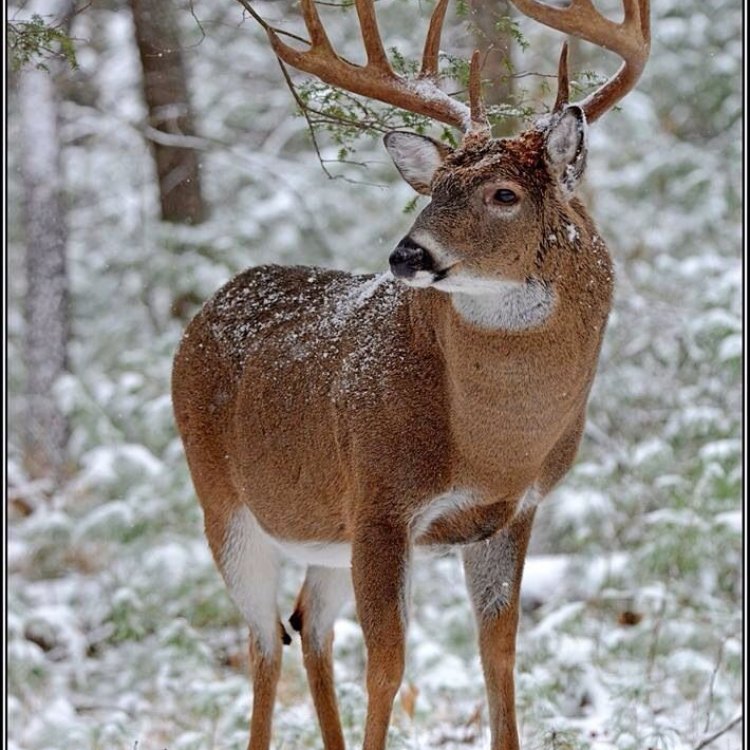
White-tailed Deer
- Adult Size: 3.5 to 4.5 feet tall at the shoulder, weighing 110 to 300 pounds
- Average Lifespan: 6 to 14 years in the wild, up to 20 years in captivity
- Reproduction: Sexual
- Reproductive Behavior: Polygamous
- Sound or Call: Grunt, bleat, snort, wheeze
- Migration Pattern: Seasonal migration
- Social Groups: Mostly solitary or in small groups
- Behavior: Active mainly during dawn and dusk
- Threats: Habitat loss, hunting
- Conservation Status: Least Concern
- Impact on Ecosystem: Important role in ecosystem as herbivores
- Human Use: Hunting, ecotourism
- Distinctive Features: White underside of the tail
- Interesting Facts: Males have antlers, which they shed and regrow each year
- Predator: Coyotes, wolves, cougars
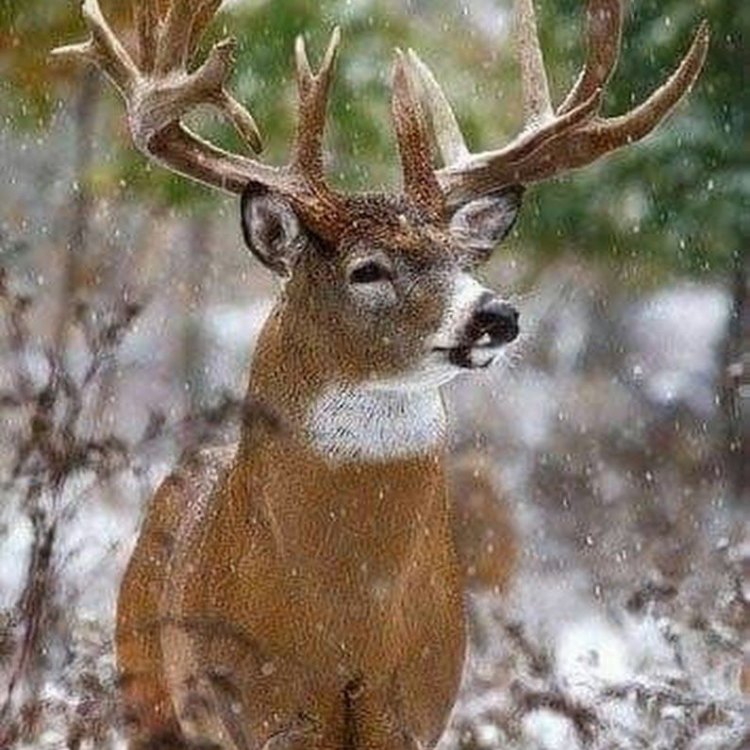
Odocoileus virginianus
The Graceful Herbivore - A Closer Look at the White Tail Deer
The sight of a white tail deer gracefully bounding through the forest is a common one in North America. These majestic animals, known for their distinctive white underside of the tail, have captured the hearts and minds of people for centuries. Found in abundance throughout the United States and southern Canada, the white tail deer has become an iconic symbol of the continent's rich wildlife. In this article, we will take a closer look at this fascinating creature, delving into its biology, behavior, and impact on the ecosystem PeaceOfAnimals.Com.The Body of a White Tail Deer
One of the first things you may notice when coming across a white tail deer is its size. An adult white tail deer can grow up to 3.5 to 4.5 feet tall at the shoulder, weighing between 110 to 300 pounds. These medium-sized deer have a slender, yet muscular build, allowing them to navigate through the dense forests with ease. Their fur can range from reddish-brown to gray, providing them with camouflage in their natural habitat.Their bodies are well-adapted for survival in the wild, with keen senses of smell and hearing that allow them to detect potential threats. They also have a keen sense of sight, but they are color blind, which means they cannot distinguish between red and green. This unique characteristic makes them less vulnerable to certain types of predators who may rely on color to identify prey Woolly Mammoth.
Reproduction and Reproductive Behavior
Like most animals, white tail deer reproduce sexually, with males and females coming together during mating season. Males, also known as bucks, are polygamous, meaning they have multiple female partners during breeding season. Bucks compete with each other for the attention of females, often engaging in physical fights using their formidable antlers.White tail deer are seasonal breeders, with mating season occurring in the fall. The gestation period for females, known as does, is around six to seven months, after which they give birth to one to three fawns. Fawns are born with white spots on their fur, providing them with camouflage until they are old enough to join their mothers in the herd.
Communication and Migration
White tail deer are not particularly vocal animals, but they do have a variety of sounds they use for communication. These include grunts, bleats, snorts, and wheezes, which they use to signal danger, locate other deer, or attract mates. Some studies have also shown that young fawns will make a noise similar to a human baby's cry when in distress, alerting their mothers to their whereabouts.One of the most intriguing behaviors of white tail deer is their seasonal migration. As the weather gets colder, deer will move to more favorable habitats in search of food and shelter. This behavior is essential in their survival, as it allows them to avoid harsh winter conditions and find resources to sustain them until spring. During migration, deer will travel in small groups, and sometimes in large herds, making their way to their designated wintering grounds.
Social Behavior
White tail deer are mostly solitary creatures, but they do come together in small groups during mating and migration. In the wild, they are not known to form large herds, unlike other deer species. However, in captivity, they may exhibit more social behavior, forming bonds with other deer within their enclosure.Behavior and Role in Ecosystem
The activity patterns of white tail deer are generally crepuscular, meaning they are most active during dawn and dusk. This allows them to avoid the heat of the day and potential predators. They are herbivores, feeding on a variety of plants, leaves, fruits, and nuts. As they forage, they play an important role in the ecosystem by helping to disperse seeds and control plant growth. They are also a vital food source for predators like coyotes, wolves, and cougars.Threats and Conservation Status
Despite their abundance in North America, white tail deer still face various threats, primarily due to human activities. Habitat loss, caused by urbanization and land development, is a significant threat to their survival. Hunting is also a major threat, with an estimated six million white tail deer harvested in the United States each year. This activity is regulated through hunting seasons and quotas, but illegal poaching still occurs.Fortunately, white tail deer populations are not currently in danger. According to the International Union for Conservation of Nature (IUCN), they are listed as "Least Concern" on the conservation status scale. However, continued efforts are needed to monitor and manage their populations to ensure their survival in the future.
Human Use and Interesting Facts
Humans have a long history of interacting with white tail deer. Native Americans used them as a source of food, clothing, and tools. Today, hunting remains a popular activity, with an estimated 10 million deer hunters in the United States alone. Hunting licenses and regulations help to maintain sustainable deer populations and generate revenue for conservation efforts.Aside from their importance in human activities, white tail deer also have some interesting facts worth noting. For instance, only male deer, or bucks, have antlers, which they shed and regrow each year. These antlers are made of bone and are used for various activities, such as defending against predators and attracting mates. Another fun fact is that white tail deer can jump over eight feet high and 30 feet in length, making them agile and elusive creatures.
The Fascinating Predator-Prey Relationship
As with any animal in the wild, white tail deer are also a prey species. Their predators include coyotes, wolves, and cougars, among others. The relationship between predators and prey is a delicate balance, where both species rely on each other for survival. While predators influence deer populations, deer also play a crucial role in keeping vegetation in check, which can ultimately affect the populations of their predators.The White Tail Deer - A Symbol of Resilience and Beauty
In conclusion, the white tail deer is a fascinating and important part of North America's natural heritage. Their graceful movements, unique behavior, and integral role in the ecosystem make them a symbol of resilience and beauty. Despite the threats they face, these animals continue to thrive in their natural habitats, captivating the hearts and minds of people everywhere. Through responsible conservation efforts, we can help ensure the continued survival of this iconic species for years to come.
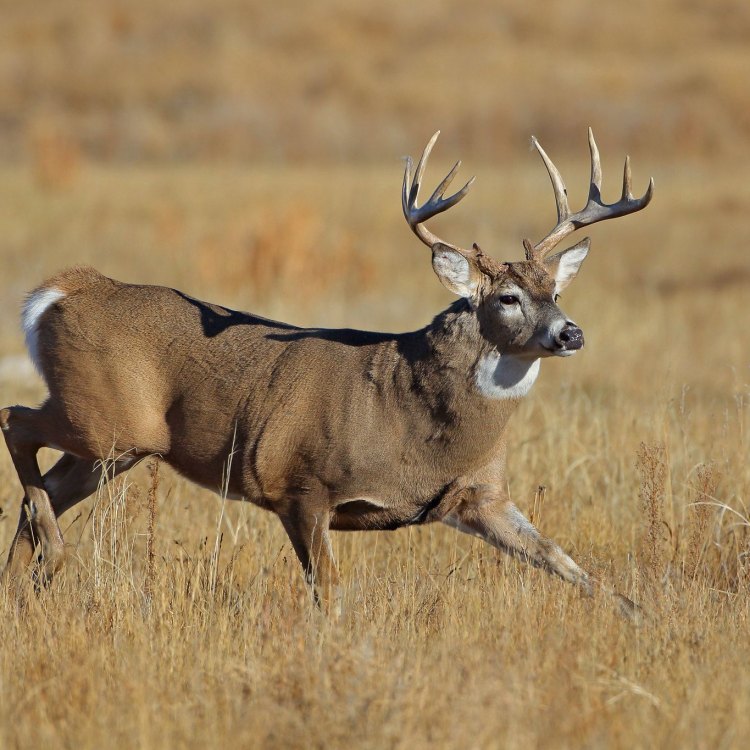
The Majestic and Adaptable White-Tailed Deer: A Fascinating Creature of North America
Disclaimer: The content provided is for informational purposes only. We cannot guarantee the accuracy of the information on this page 100%. All information provided here may change without prior notice.



